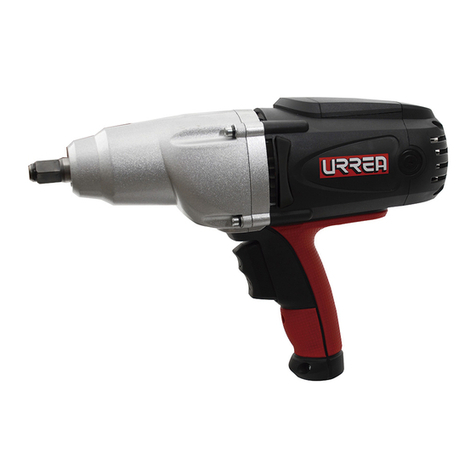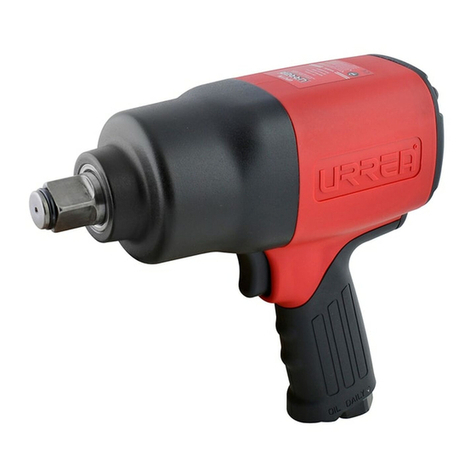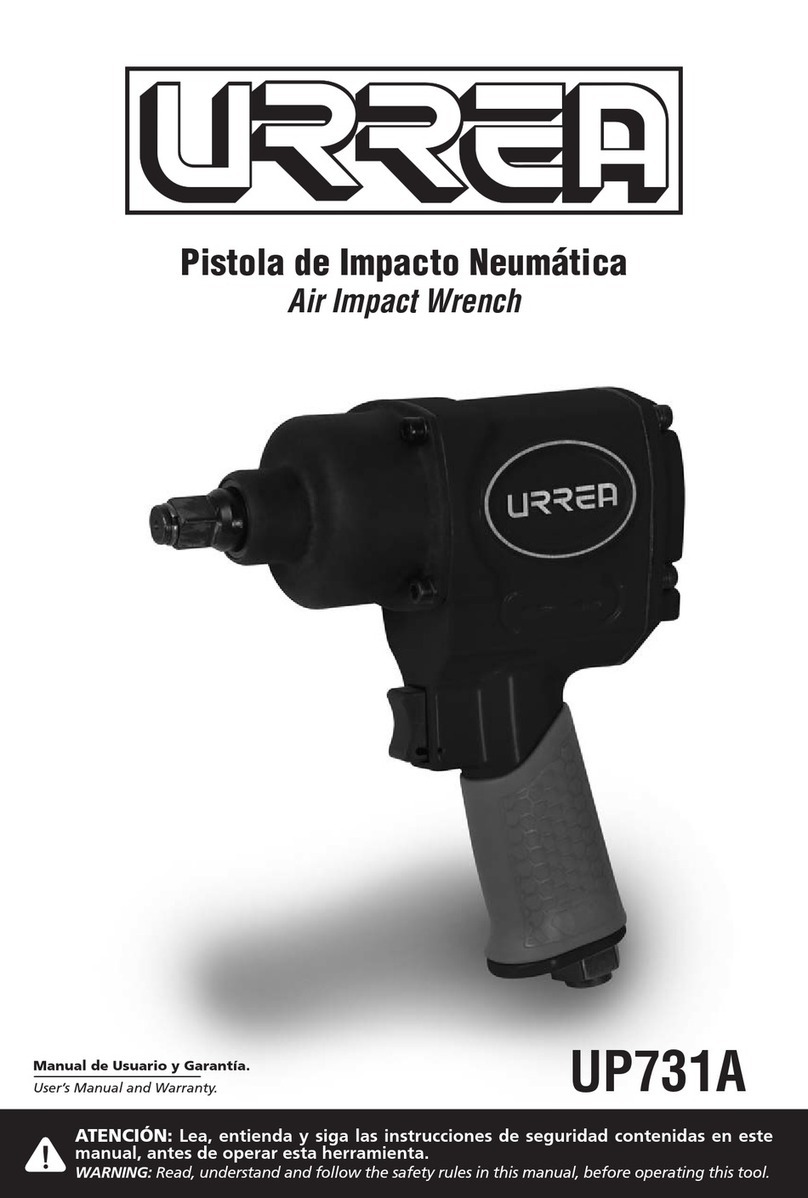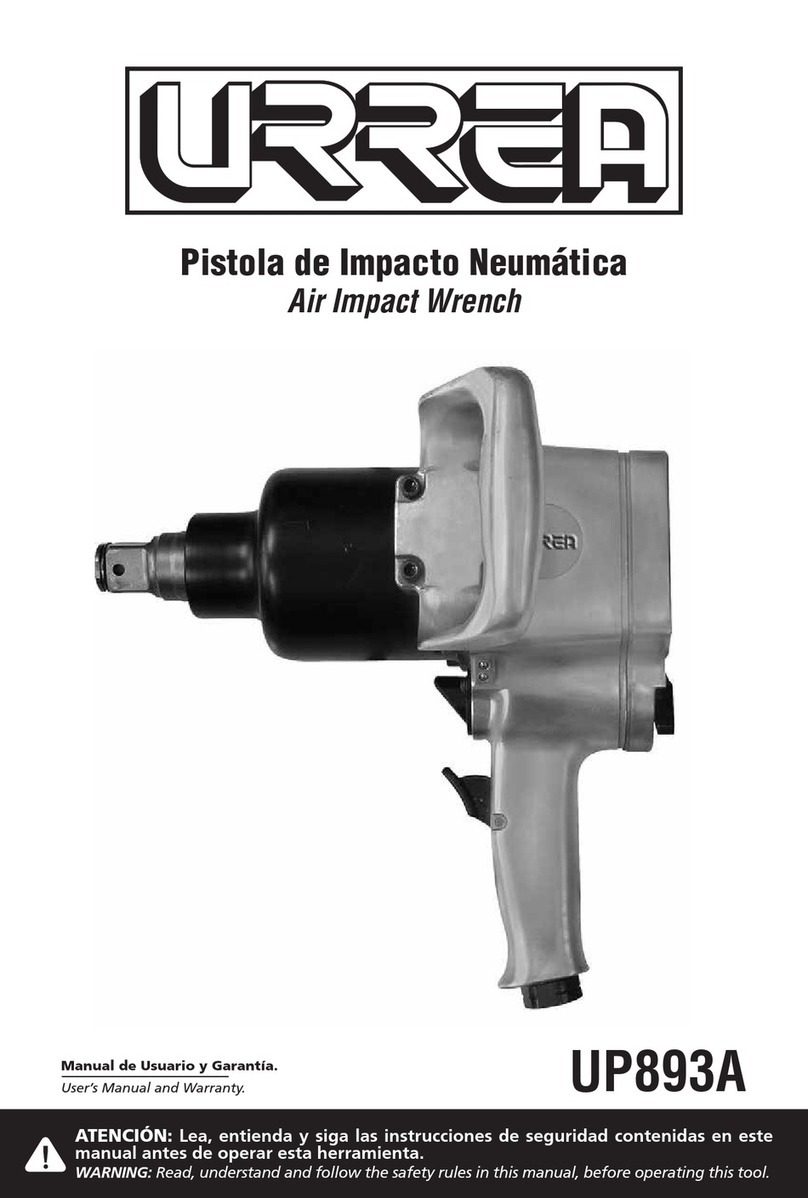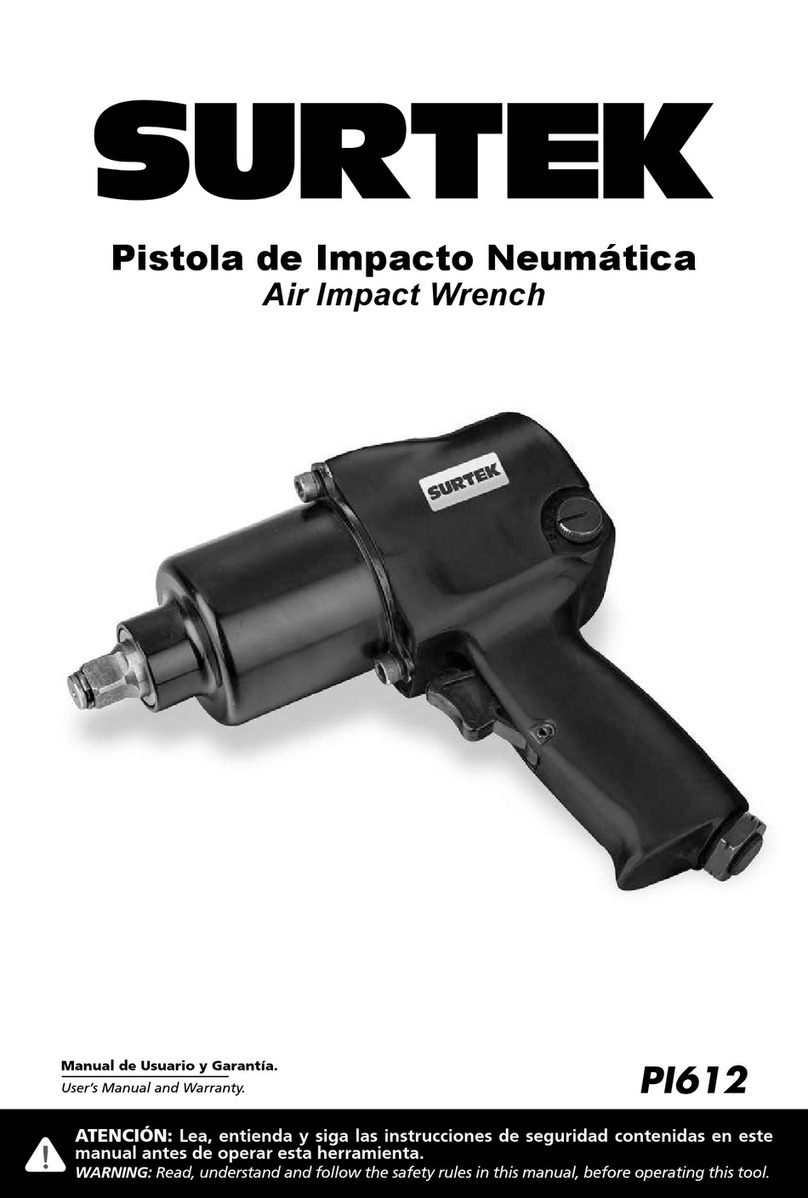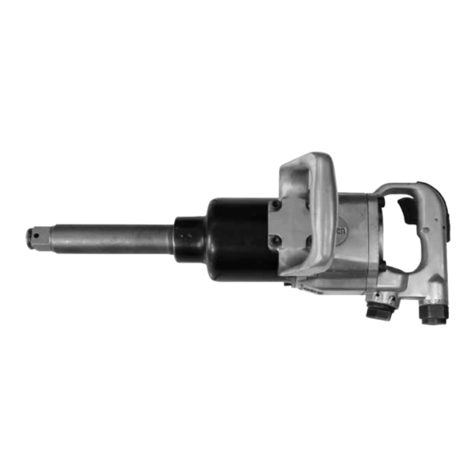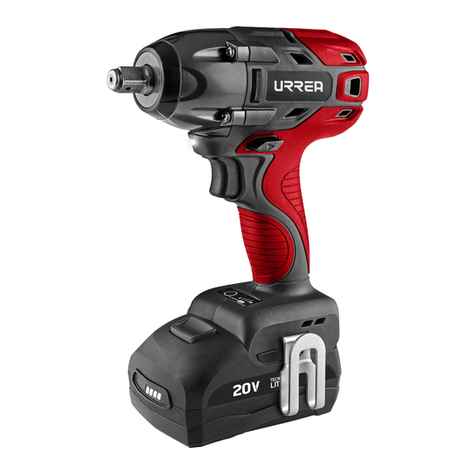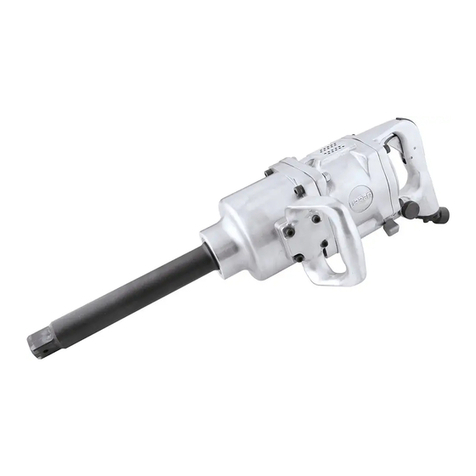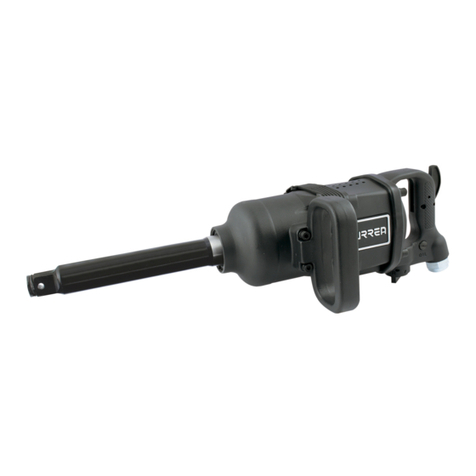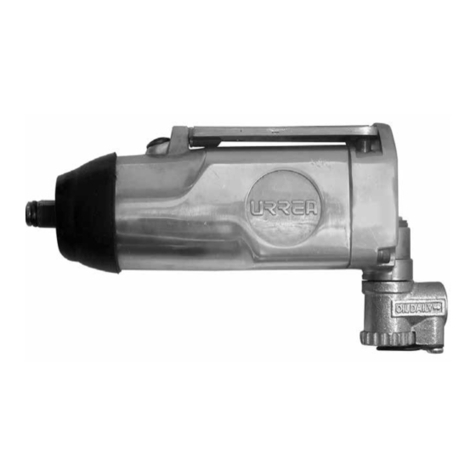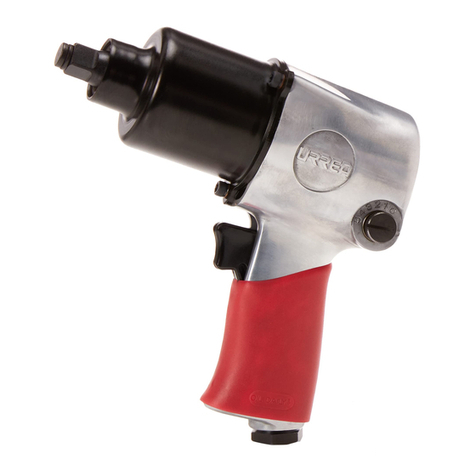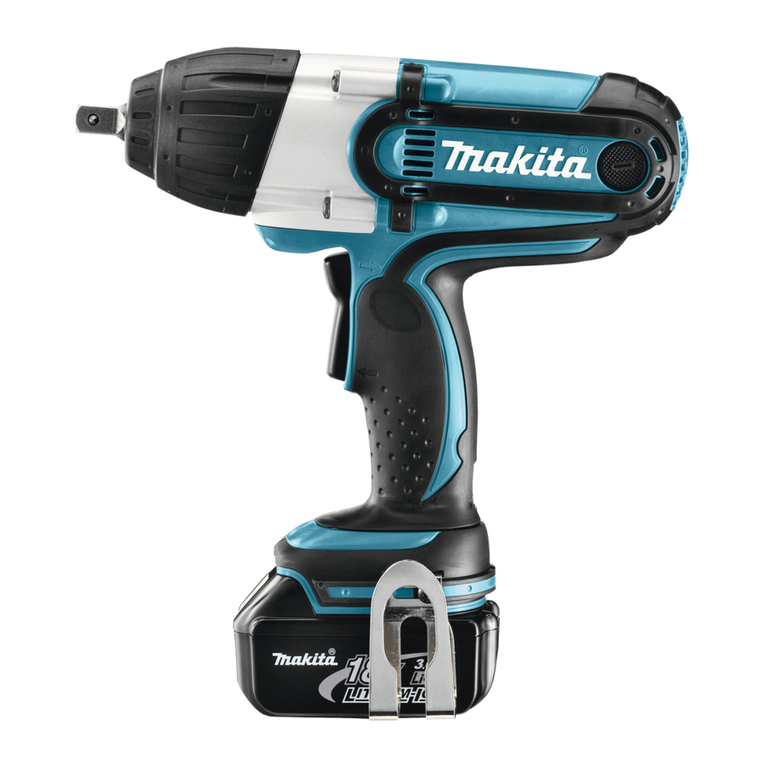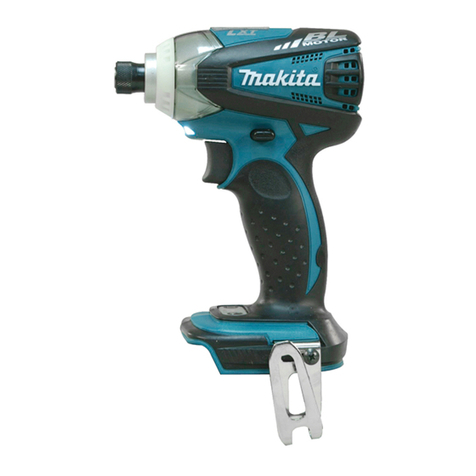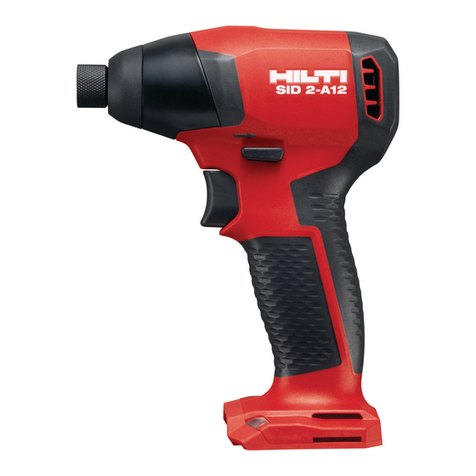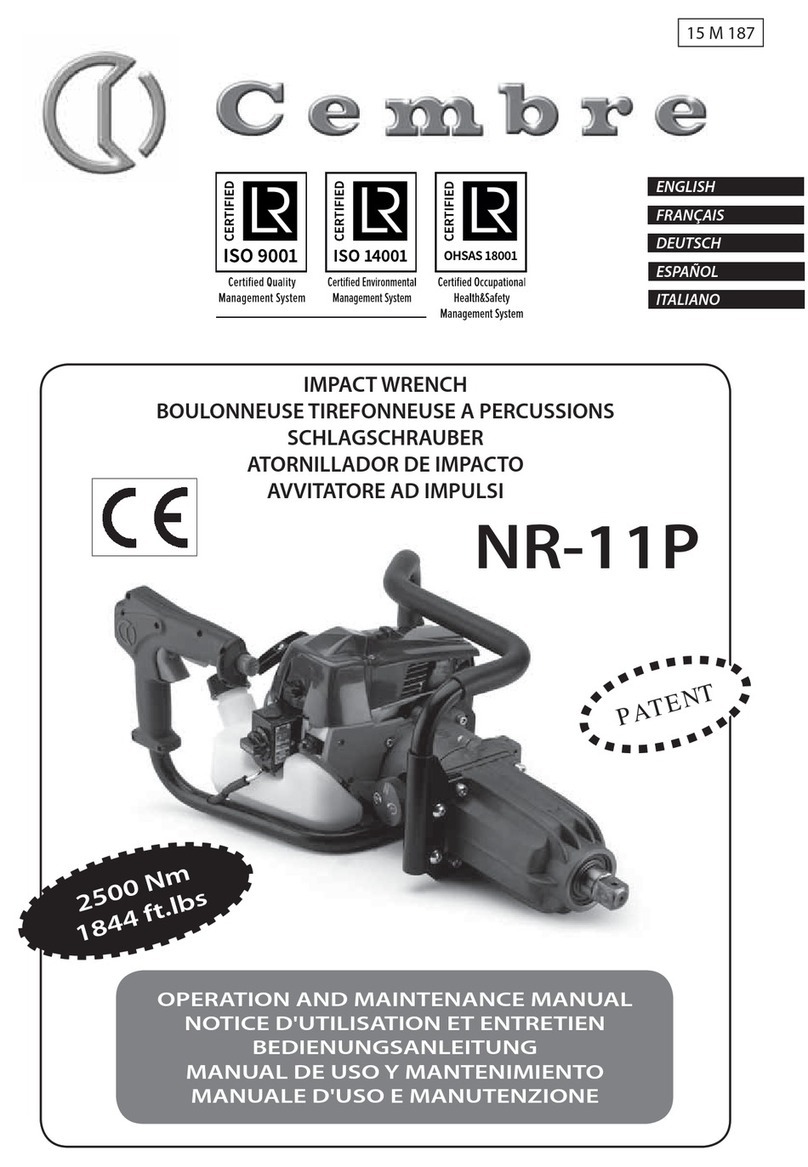
3
ESPAÑOL•Manual de usuario
5. Guarde la herramienta cuando no se encuen-
tre en uso y manténgala fuera del alcance de
los niños y otras personas no capacitadas. La
herramienta es peligrosa en manos de perso-
nas inexpertas.
6. Verifique la alineación y el movimiento de
las piezas móviles, rotura de piezas y cualquier
otra condición que afecta el funcionamiento
de la herramienta. Si está dañada, aplíquele
el servicio adecuado antes de usarla. Muchos
accidentes son causados por herramientas mal
cuidadas. Existe el riesgo de un estallido si la
herramienta está dañada.
7. Utilice solo accesorios recomendados por el
fabricante para cada modelo especifico de he-
rramienta. El uso de accesorios no establecidos
para su uso con un modelo de herramienta es-
pecifico, incrementa el riesgo de lesiones per-
sonales.
SERVICIO
1. El servicio de la herramienta debe ser reali-
zado únicamente por personal capacitado.
2. Cuando se realice servicio a la máquina, uti-
lice únicamente refacciones idénticas. Utilice
solamente partes autorizadas.
3. Utilice solamente lubricantes proporciona-
dos con la herramienta o aquellos especifica-
dos por el fabricante.
INSTRUCCIONES DE OPERACIÓN
PREVIO AL FUNCIONAMIENTO
La herramienta ha sido diseñada para funcio-
nar manualmente. Siempre se recomienda que,
mientras se esté utilizando la herramienta, los
operadores permanezcan de pie sobre un piso
sólido, en una posición segura con un agarre y
una base firmes.
Utilice un suministro de aire limpio y lubrica-
do que provea a la herramienta una presión
medida de aproximadamente 90 PSI cuando
la herramienta se encuentre funcionando con
la palanca totalmente presionada. No conec-
te la herramienta al sistema de aire sin una
válvula que cierre fácilmente el aire. Se reco-
mienda utilizar un filtro, regulador y lubrica-
dor de aire, ya que este mismo brindará aire
limpio y lubricado en la presión correcta a la
herramienta. Cuando la presión de suministro
exceda el máximo marcado de la herramienta
en cualquiera de los casos, se utilizarán en todo
momento reguladores de presión de aire ade-
cuados mientras la herramienta esté en funcio-
namiento.
IMPORTANTE: Diseñe la línea de suminis-
tro de aire para asegurar la máxima presión de
funcionamiento en la entrada de aire de la he-
rramienta. Vacíe el condensado de las válvulas
en los puntos inferiores de la tubería, filtro de
aire y depósito del compresor de forma diaria.
Instale un cople de seguridad (válvula de co-
rredera) y utilice un dispositivo de retención
de manguera y coples en cualquier unión de
manguera sin amortiguador interno para evi-
tar que la manguera de un latigazo en caso de
que falle o de que se desconecte.
Se recomienda que la presión del aire en la he-
rramienta sea de 90 PSI mientras la herramien-
ta esté funcionando para que no se exceda el
máximo de revoluciones por minuto. Se puede
hacer funcionar la herramienta a menor pre-
sión pero nunca a más de 90 PSI. Si funcionara
con una presión más baja, el rendimiento de la
herramienta.
CONECTANDO AL SUMINISTRO DE AIRE
1. Nunca conecte la herramienta a una fuente
de suministro de aire que exceda la presión es-
pecificada por el proveedor. Sobre presurizar la
herramienta puede causar que estalle, opera-
ción anormal, rompimiento de los componen-
tes de la máquina o graves lesiones personales.
Utilice solamente aire comprimido limpio, seco
y regulado a la presión establecida o dentro del
rango que se establece para la herramienta.
Siempre verifique que el suministro de aire ha
sido ajustado a la presión establecida o dentro
del rango de presión establecido antes de usar
la herramienta.
2. Nunca utilice oxígeno, dióxido de carbono,
gases combustibles ni ningún gas envasado
como una fuente de aire de la herramienta.
Tales gases son capaces de explotar y causar
lesiones graves a personas.
3. Incorpore un filtro, un regulador con manó-
metro, lubricador, válvula de cierre en línea, y
acoplamiento rápido para un mejor servicio,
como se muestra en la siguiente figura. Una
válvula de bola de cierre en línea es un disposi-
tivo importante de seguridad, ya que controla
el suministro de aire, incluso si la manguera de
aire se rompe. La válvula de cierre debe ser una
válvula de bola, ya que se puede cerrar rápi-
damente.
